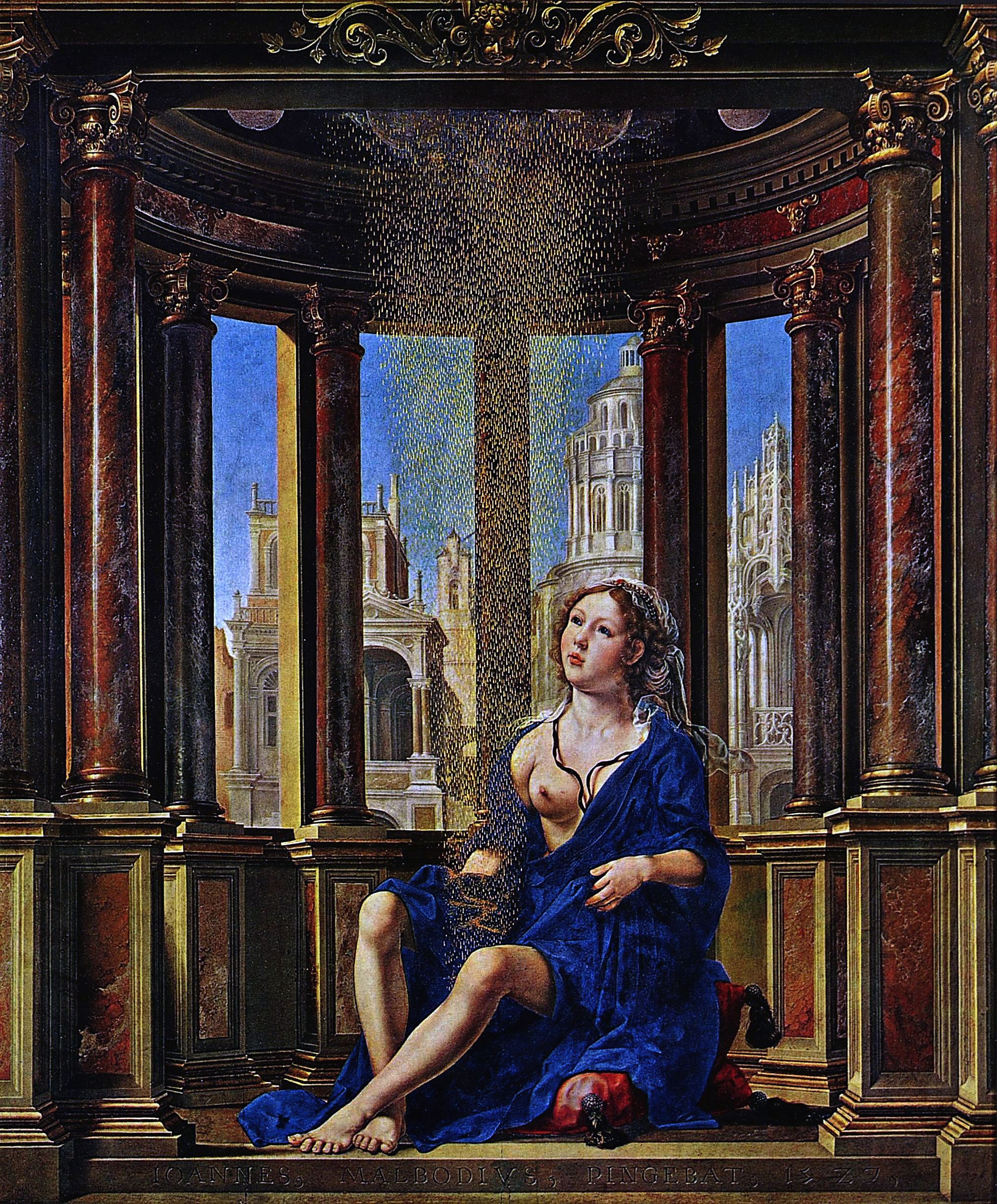
Even in our present day (where we are used to much more) most of us will still see the erotic symbolism of this painting. Imagine the shock it must have been for the people who saw it in 1527.
Danaë sits and watches the golden rain as it streams down; her stunning blue dress has slipped from her shoulder, revealing her right breast. Her nakedness is further emphasised by her bare legs which are spread apart, receiving the rain between them.
The story behind it is a mythological one: King Acrisius had asked the oracle of Delphi whether he would get any sons. The oracle replied he would not, but his daughter Danaë would have one and he would be killed by him. To escape this fate many a Greek king would have killed her, but Acrisius just build a closed chamber for her in his palace where she would spend the rest of her life alone. Unfortunately for him, Zeus saw and desired her. He visited her as a golden rain which fell straight in her womb (this is the moment Gosseart captured). When her son Perseus was born, Acrisius was wise enough not to provoke the Gods by killing them both but instead cast them into the sea in a wooden chest. They survived, and years later Perseus accidentally killed the ageing Acresius at the Olympic games when his javelin (or discuss) struck him on the head, thus fulfilling the prophecy (as said before; the one lesson in Greek mythology is that man can’t escape fate).
Although the theme is undeniable mythological there also a religious connection to be found. The story of Danaë being impregnated by Zeus is very similar to Maria’s immaculate conception. In the painting, Gosseart emphasised it by using the expensive lapis lazuli for the blue colour of Danaë’s dress, something which was usually reserved for the dress of the Madonna.